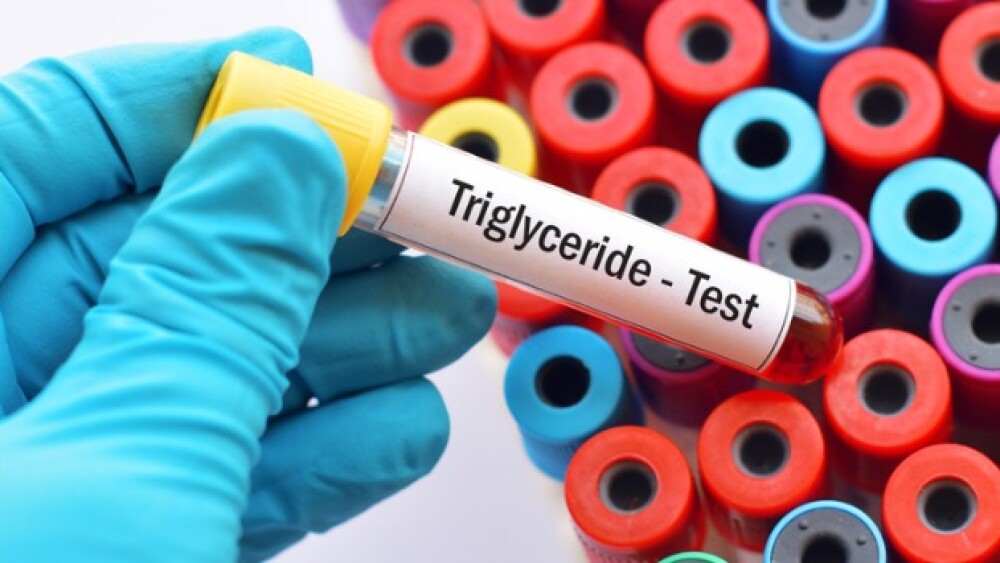The company’s olezarsen cleared a late-stage study, eliciting a sharp reduction in triglyceride levels in patients with familial chylomicronemia syndrome. Ionis plans to submit a New Drug Application to the FDA.
Pictured: Test tube containing a patient specimen for a triglyceride test/iStock, jarun011
Topline data from the Phase III Balance study showed that Ionis Pharmaceuticals’ antisense candidate olezarsen met its primary endpoint, significantly reducing triglyceride levels in patients with familial chylomicronemia syndrome, the company announced Tuesday.
With these results, Ionis is preparing to submit a New Drug Application to the FDA in early 2024, alongside regulatory filings in the European Union. Olezarsen previously won the FDA’s Fast Track designation in familial chylomicronemia syndrome (FCS), which would shorten the regulator’s review period for the candidate’s application.
“We believe olezarsen has the potential to become the new standard of care for patients with FCS,” Ionis CEO Brett Monia said in a statement. If approved, olezarsen would be the first FDA-authorized treatment for FCS in the U.S. and the company’s first wholly-owned asset to make it to market.
In the Balance study, patients treated with an 80-mg dose of olezarsen saw a significant drop in triglyceride levels compared with placebo. This effect was apparent at six months and continued to improve through 12 months. Olezarsen treatment also led to a 100% reduction in acute pancreatitis events, one of the study’s key secondary endpoints.
Ionis will present full data and analysis from Balance at a future medical meeting.
Balance is a randomized, double-blinded and placebo-controlled trial that enrolled 66 FCS patients, who were also given background therapies such as statins, fibrates and omega-3 fatty acids. Aside from the 80-mg subcutaneous dose, olezarsen was also given as a 50-mg injection. This lower dose level also decreased triglyceride levels and the incidence of acute pancreatitis events, but these fell short of statistical significance.
In terms of safety, the Balance study found olezarsen to be safe and well-tolerated, with most of its side effects being mild or moderate in severity. There were no cases of hepatic or renal toxicity, while injections did not trigger meaningful reductions in platelet counts.
There was one patient death, though it was deemed unrelated to the study drug.
Ionis also recorded notable effects on biomarkers. At the 80-mg dose, olezarsen elicited at least a 75% drop in Apolipoprotein C-III, a crucial protein that helps regulate the metabolism of triglycerides in the blood. ApoC-III is also known to target and inhibit the lipoprotein lipase (LPL) enzyme, the activity of which is impaired in FCS, leading to the pathologic inability to break down chylomicrons.
Chylomicrons are lipoprotein particles that are 90% triglyceride in composition. When LPL function is weakened, chylomicrons accumulate in the bloodstream, triggering a rise in triglyceride levels. This gives rise to the typical symptoms of FCS such as milky blood, abdominal pain and acute pancreatitis.
Currently, there are no FDA-approved treatments for FCS and patients rely on excessively restrictive diets to minimize the health risks associated with the disease.
Tristan Manalac is an independent science writer based in Metro Manila, Philippines. He can be reached at tristan@tristanmanalac.com or tristan.manalac@biospace.com.






